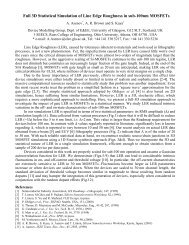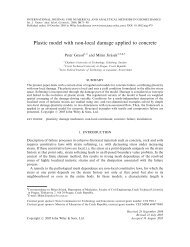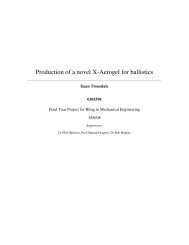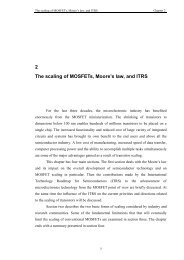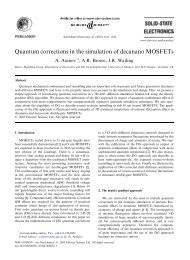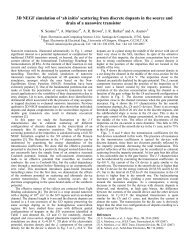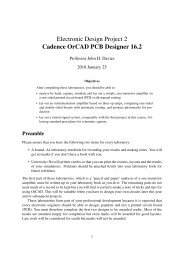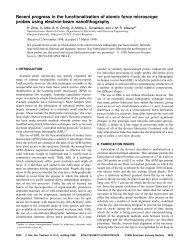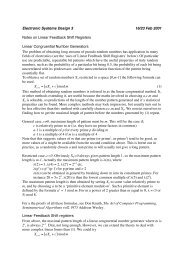Cadence OrCAD PCB Designer
Cadence OrCAD PCB Designer
Cadence OrCAD PCB Designer
You also want an ePaper? Increase the reach of your titles
YUMPU automatically turns print PDFs into web optimized ePapers that Google loves.
2. The base–emitter junction of a transistor is a forward-biassed diode (hence the arrow on<br />
its symbol) and therefore has a voltage of V be<br />
≈ 0.7V across it. Calculate the voltage on<br />
the emitter.<br />
Hint for demonstrators.<br />
2.0 V ❦<br />
3. We now know the voltage across the resistor R 4<br />
. Calculate the current through it.<br />
Hint for demonstrators.<br />
11.1 mA (the aim was 10 mA) ❦<br />
4. The current into the base of a transistor is much smaller than the other two currents, so<br />
the current flowing into the collector is nearly equal to that flowing out of the emitter.<br />
Calculate the voltage dropped across R 3<br />
and hence the voltage on the collector.<br />
Hint for demonstrators.<br />
4.3 V across R 3<br />
so V c = 5.7V (the aim was 6 V) ❦<br />
This has shown why the four resistors are needed but not the capacitors. What is the expression<br />
for the impedance of a capacitor (remember that it is complex), and how does its magnitude<br />
depend on frequency? The function of the capacitors in this circuit is to allow high frequencies<br />
to pass – the signals that we wish to amplify – but to block the steady voltages that set the bias<br />
point.<br />
• We have seen that the base of the transistor is kept at a particular voltage by the potential<br />
divider, which sets the bias point. The capacitor C 1<br />
on the input isolates this voltage from<br />
the previous stage of the system but lets the signal through.<br />
• Look at the circuit through which the input signal flows. It passes ‘through’ the capacitor<br />
C 1<br />
, through the base–emitter junction of the transistor, through R 4<br />
and C 2<br />
in parallel, and<br />
back to the ground connection of the input. This shows that R 4<br />
is in series with the input<br />
and will reduce its magnitude. We really want all the voltage to be applied across the<br />
base–emitter junction, where it will be amplified by the transistor. However, we can’t<br />
simply get rid of R 4<br />
because it is needed to set the bias point – it determines the current<br />
through the transistor, as you saw above. The solution is to put the bypass capacitor C 2<br />
across the resistor.<br />
The bias has zero frequency so it all flows through the resistor. The signal has a ‘high’ frequency<br />
so most of it flows through the capacitor, which should have a much smaller impedance than<br />
the resistor. Ideally the impedance of C 2<br />
should obey |Z C<br />
( f )| ≪ R 4<br />
for all frequencies in the<br />
signal. Is this true for the values in figure 1?<br />
Hint for demonstrators. No! At the lowest frequency of 10 Hz, X C<br />
= 1/2π fC = 160kΩ,<br />
which is much larger than R 4<br />
= 180Ω. The capacitor should be a thousand times larger. This<br />
will be shown by the simulation. ❦<br />
Finally, we would like to estimate the voltage gain of the circuit. This needs some background<br />
on transistors that you have not yet covered so I’ll just quote the result. The gain is<br />
given by<br />
V out<br />
= −g m R<br />
V 3<br />
(1)<br />
in<br />
5



